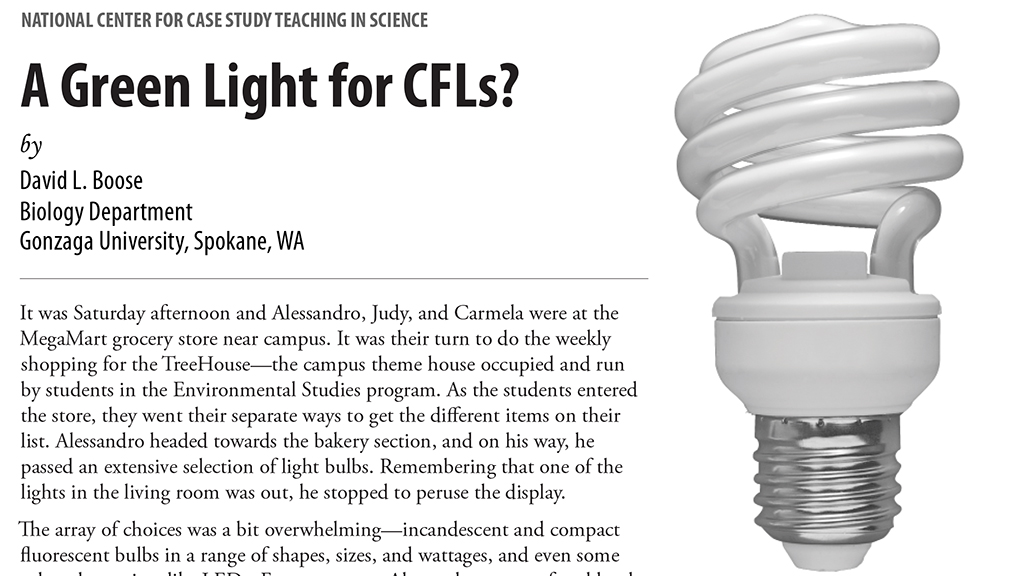Abstract
In this problem-based learning case, three housemates in an environmentally-themed college house debate the pros and cons of compact fluorescent lamps (CFLs) over incandescent lamps. The students raise issues of the cost difference between the lamps (both in the short and long term), energy use and greenhouse gas production in the manufacture and use of the lamps, and the mercury content in CFLs and the risks that poses to people and the environment. Students are asked to identify the information needed to evaluate the choice between the two lamp types, and then use a published life-cycle analysis to find and evaluate that information. To conclude, they make a decision and argue for it using quantitative evidence and reasoning. The case was developed for an intermediate-level course designed to help environmental studies students understand the role of scientific information and scientific thinking in resolving complex environmental problems.



